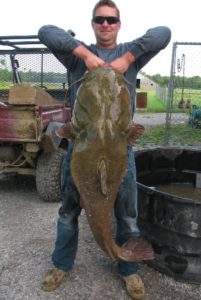

Similar collection rates at an upstream site in the Ronda community have decreased from nearly 300 fish per hour in 2005 to 20 fish per hour. Hodges indicated fisheries biologists with the commission recently completed a series of electrofishing surveys in Surry, Yadkin and Wilkes counties and found that catch rates near Elkin had declined from a high of 120 fish collected per hour in 2005 to less than three fish collected per hour this year. He said the water quality has not improved to the point that this is a factor hurting the bullheads. Soil and Water Conservation District and the Natural Resources Conservation Service have resulted in less runoff and better agricultural practices that have helped make the Yadkin cleaner.

“Even in previous years when the Yadkin was dirtier it tended to favor these little catfish over bass or trout.” He said buffer zones of vegetation along rivers and creeks and efforts coordinated by the N.C. According to North Carolina Wildlife Resources Commission fisheries biologist Kin Hodges, their observation is true and is due to the artificial introduction of Flathead catfish to local waters.“The bullhead is traditionally one of the main fish taken on the Yadkin,” said Hodges. Local anglers are reporting to wildlife resource officers a decline in Snail and Flat bullhead catfish, tough local species that have provided recreation and food for Surry County fishermen. Fish biologists believe it is due to non-native Flathead catfish preying on them.

Known as the bullhead, mud cat or yellow catfish has decreased dramatically.


 0 kommentar(er)
0 kommentar(er)
